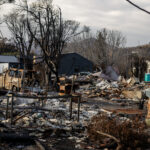Treasurer Phil Angelides has indicated recently that he has some concerns about the stability of the California Earthquake Authority.
He made his fears public Oct. 26, sending out a letter to lawmakers calling for a serious examination of the entity. Angelides said in the letter he is concerned that the CEA would be hard-pressed to pay a large number of claims resulting from any major earthquake.
The move comes soon after the release of a controversial report examining the CEA by Tillinghast-Towers Perrin. Although the report deemed the CEA financially sound, it raised concerns about the CEA’s ability to pay out if the “big one” hits. Adding to the doubts is the fact that former Commissioner Chuck Quackenbush established the quasi-public agency during his tenure, and his resignation in July has left some question marks as to its future. However, the CEA feels confident heading into 2001.
“The Tillinghast report raised a number of constructive suggestions that the CEA should look at on a go-forward basis; they’re not criticisms of what we’ve done so far,” said CEA spokesman Mark Leonard. “We’re having an ongoing dialogue with the Treasurer and the board on what direction we’re going in.”
According to Leonard, the CEA currently has 877,000 policies in place. “This number has been decreasing along with the rest of the market-it’s a gradual decrease,” he said. “…There are ways to increase the survivability of the CEA…but basically, the report found that our capacity is as good as or better than the private cat insurers.”
California experiences hundreds of earthquakes every day, but fortunately most of the shakes are at too low a magnitude to cause damage. The Sept. 3 Napa quake, with a magnitude of 5.2, did cause some “significant damage,” according to Leonard.
“We’re at about 130 claims from Napa so far,” he said. “The claim is initially reported to the member carrier, the carrier adjusts it, pays it and then seeks reimbursement from the CEA…it is supposed to be as seamless as possible. “That’s part of our disaster response. We encourage any policyholder who even suspects damage to file a claim, just to ensure that the claim is looked at and we don’t run into situations like Northridge, where it wasn’t until down the road that they discovered they had serious damage.”
Commissioner Harry Low is enforcing this concept with a recent press release urging policyholders to report any earthquake damage. “Although the building may look fine on the surface, there may be some hidden damage. If you think that there may be damage, you may want to contact your insurer and make a claim so as to protect your rights under the policy,” the notice stated.
“Carriers need to treat their customers well, especially with today’s competitive homeowners market,” Leonard said. “It’s in their best interest to make sure [policyholders’] claims are handled efficiently and fairly.” The CEA’s fate will continue to be weighed at upcoming hearings, including one called by Senate Insurance Committee Chairwoman Jackie Speier (D-Hillsborough) this week.
Was this article valuable?
Here are more articles you may enjoy.


 Florida Jury Returns $779M Verdict for Family of Security Guard Killed at Gambling Cafe
Florida Jury Returns $779M Verdict for Family of Security Guard Killed at Gambling Cafe  Hartford: 10-Year Analysis Shows Shifts in Common, Expensive Small-Business Claims
Hartford: 10-Year Analysis Shows Shifts in Common, Expensive Small-Business Claims  Acrisure to Buy MGA Vave From Canopius
Acrisure to Buy MGA Vave From Canopius  California Again Delays Wildfire Protection Rules for Homes
California Again Delays Wildfire Protection Rules for Homes 

